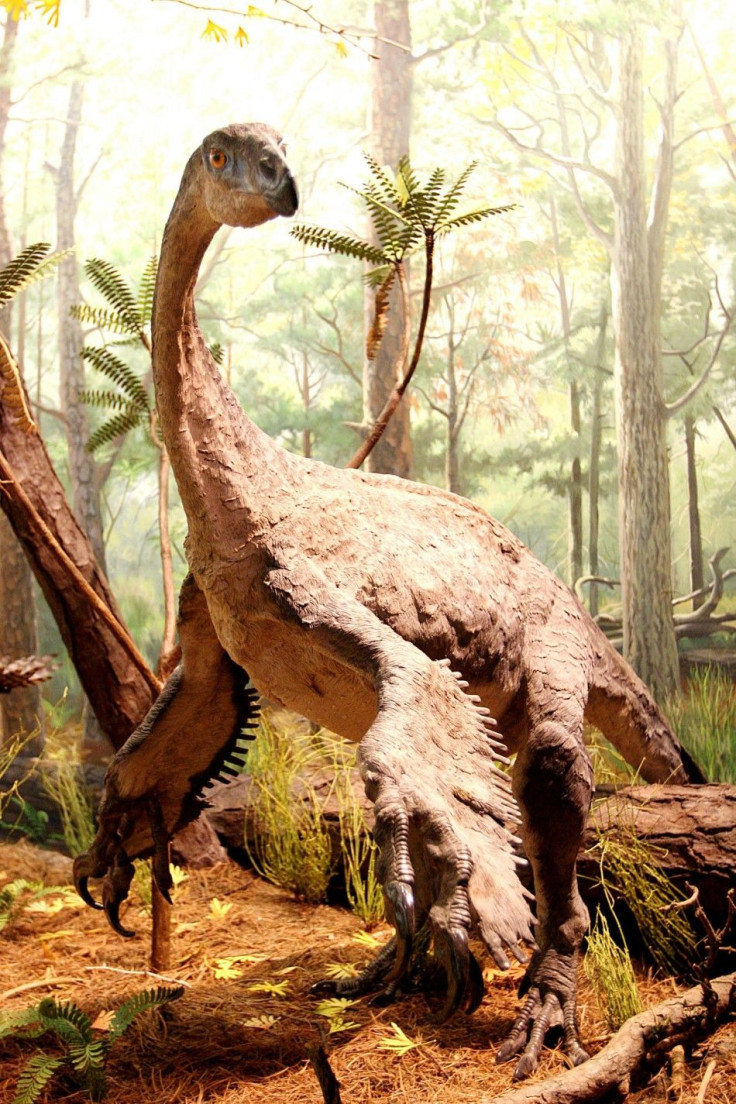Fossil Discovery Reveals Giant Birds Lived Among Dinosaurs

New research on a fossil of a giant prehistoric bird, that was roughly the size of an ostrich, reveals the creature lived among the dinosaurs.
Palaeontologists, led by Dr Darren Naish from the University of Portsmouth, have confirmed that new research on a fossil of single jawbone reveals that a species of large birds, roughly 6-10 feet (2-3 metres) tall, lived during the Cretaceous period. The Cretaceous period is when dinosaurs roamed the earth.
The fossil had sat in a museum for years until it was finally identified palaeontologists. It was originally discovered in a dry site in Kazakhstan. When the bird was alive, the region in Kazakhstan was a floodplain when surrounded by criss-crossing rivers. Other discoveries on the fossil indicate there were nearby forests and aquatic animals indicate the continual presence of lakes, pools or big rivers
The bird, which has been named Samrukia nessovi, represents a change in established paleontology thoughts.
"Since the 1850s we've known that numerous bird species lived during the age of the dinosaurs (known as the Mesozoic Era), but virtually all were crow-sized or smaller," Naish said. "We can now be really confident that Mesozoic terrestrial birds weren't all thrush-sized or crow-sized animals - giant size definitely evolved in these animals and giant forms were living in at least two distinct regions."
Another giant sized bird that lived among the dinosaurs had already been discovered in the area around France. This was a similar ostrich sized bird, named Gargantuavis philoinos, and until now was the lone big bird in the dinosaur age discovery.
He says the discovery of Samrukia nessovi fits the changing picture from palaeontologists that birds in the Mesozoic Era were diverse, with lots of overlap between them and modern species.
"The French Gargantuavis has already demonstrated the presence of giant Cretaceous birds and we argue that Samrukia adds a second example and increases the significance of Gargantuavis since it shows that it wasn't a one off," Naish said.
The bird's skull was about 12 inches or 30 cm long and it has a wingspan of 13-feet or 4 metres. The researchers indicate the bird was likely a prey for the tyrannosaurs, dromaeosaurs and other predatory dinosaurs.
The researchers said they couldn't determine whether or not the bird flew or whether it was a predator or not. Its jaw-bone structure doesn't reveal either obvious specializations for dedicated plant-eating or feeding on aquatic prey.
"People tend to forget that birds co-existed with their dinosaurian relatives but it now seems that the Cretaceous was not a 'dinosaurs-only theme park," Naish said, making reference to the popular film Jurassic Park.
Naish and his team's findings are published in a current issue of Royal Biology Letters.
Follow Gabriel Perna on Twitter at @GabrielSPerna
© Copyright IBTimes 2024. All rights reserved.





















